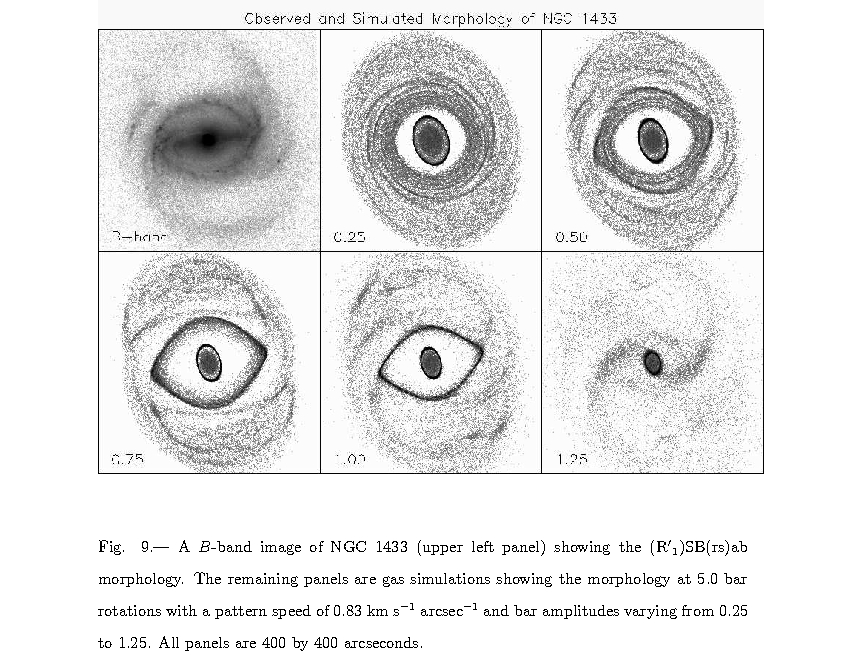

This figure is from the paper "Ring Star Formation Rates in Barred and Nonbarred Galaxies," by R. D. Grouchy, R. J. Buta, H. Salo, and E. Laurikainen, Astronomical Journal, submitted, 2009. It involves an examination of how the intrinsic shapes of inner rings that envelope bars depend on the strength of the bar, quantified using Qg, the maximum relative nonaxisymmetric torque per unit mass per unit square of the circular speed, taken as a measure of bar strength. The upper panels show schematics of two real rings deprojected to show intrinsic shape. The lower panels show the maximum tangential to mean radial force as a function of galactocentric radius. Qg is the maximum of this function. The diagrams show that rings are most elongated when the ring major axis radius coincides closely with the maximum relative torque strength. In contrast, rings are rounder when they extend beyond the torque maximum.

This figure is from the paper "The Bar Pattern Speed of NGC 1433 Estimated from Sticky Particle Simulations", by P. M. Treuthardt, H. Salo, P. Rautiainen, and R. Buta, Astronomical Journal, vol. 136, p. 300, 2008. One of the main conclusions from this paper is that the prominent spiral features in NGC 1433 extend between the inner and outer 4:1 resonances with the bar, and do not extend to the outer Lindblad resonance (OLR) as once thought.